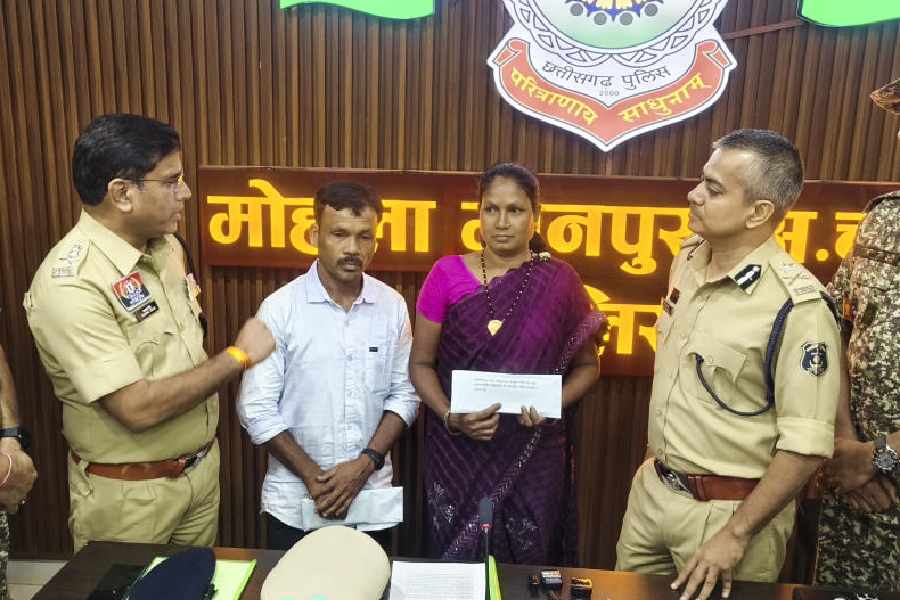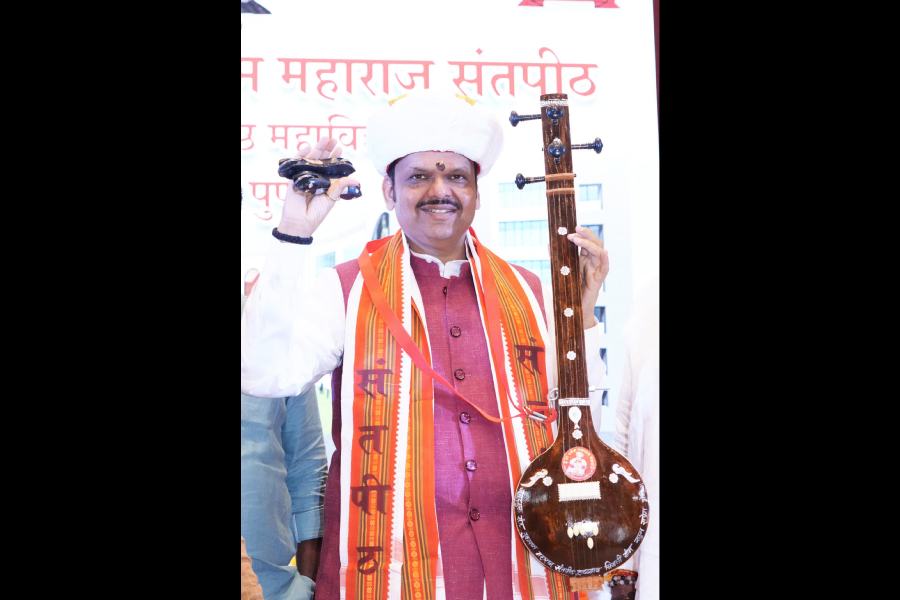
Canonical drama receives rewritten treatment from two Bengali groups based outside Calcutta. Marking the quatercentenary of Shakespeare's passing, Kalyani Kalamandalam presents Macbeth Mirror, in which director Santanu Das whittles Dattatreya Datta's translation of Macbeth into an Indianization featuring only the Witches, and applies on it the concept of worshipping the goddess Kali for malevolent ends. Thus, three devotees of Kali's supernatural powers (rather than her beneficial aspects) turn into the Witches and the synoptic action plays out through them, who also "become" the main characters of Macbeth, Lady Macbeth and Banquo as the need arises.
I am not aware that anyone in the world has reduced Macbeth in this novel fashion, which imparts a preeminent position to transformation and possession. The acting combines stylized Artaudian ritualism with Tantric and yogic practice, creating an eerie circle of black magic. The cast put on saris of auspicious white and red (picture), chant mantras, contort themselves and smear each other with various potent substances to conjure up what they want. Monalisa Chatterjee leads the trio, her vocal and physical abilities admirably stretched to near-exhaustion in her most intense performance to date, while Shipra Dey and Jayeeta Das follow. At the same time, one wishes for more equal distribution of parts, so that the two juniors get greater chance to show their mettle.
Nandinir Pala, by Kathok Performing Repertoire (Howrah), takes off from Tagore's Rakta-karabi. Scripted and directed by Kriti Majumder, it does not depart from its source as radically as Macbeth Mirror. Majumder stays more or less close to Tagore's text as well as themes and characterization, making us wonder why she thought it necessary to change the title. The word pala suggests a folk idiom, which does not get manifested. In fact, Prasanta Bhattacharjee's set design of metal rods and sporting nets lends a contemporary look. But like most productions of Tagore's classic, this one falters near the end when the Raja finally appears. Very few actors can command his forceful presence, leave alone his physique as described by Nandini. Consequently, the last scene becomes anti-climactic.










